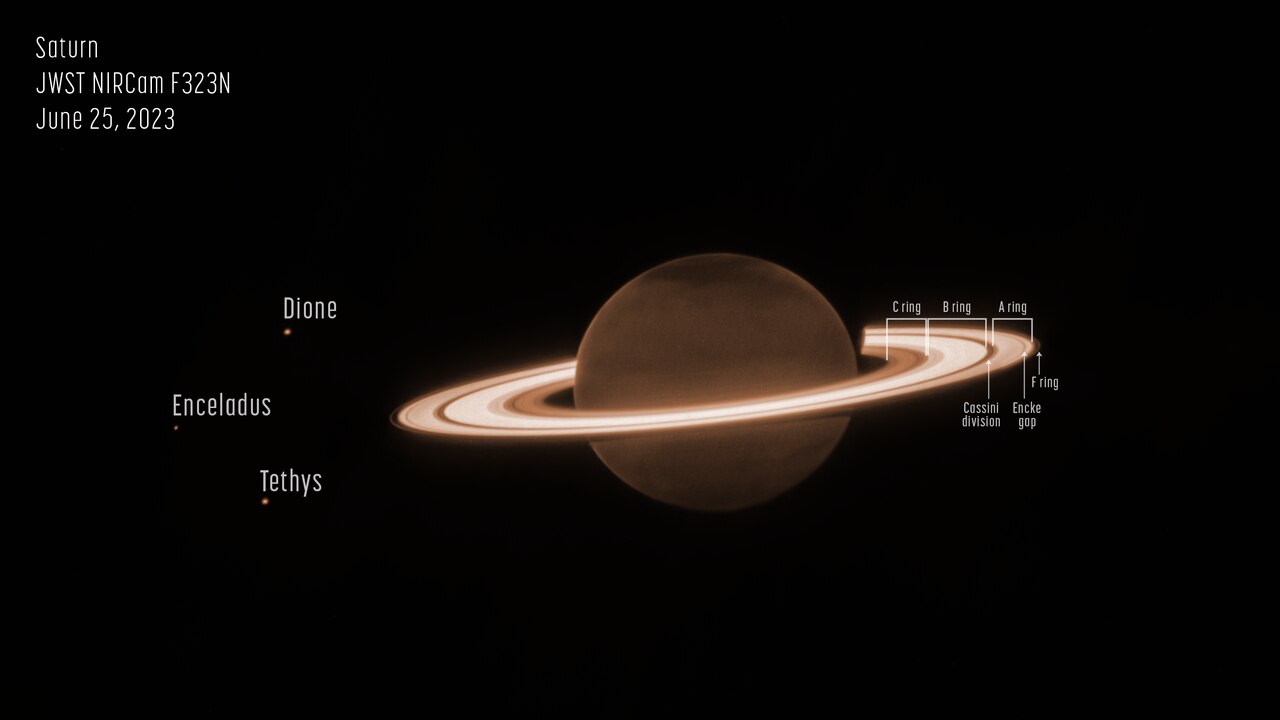As new Webb telescope images dazzle, chief engineer plans Alabama talk
New images of Saturn and its rings by the James Webb Space Telescope are fascinating scientists and the public and Webb fans in or near Alabama have a chance to hear the telescope’s chief engineer talk about the telescope at the U.S. Space & Rocket Center in Huntsville.
The contrast between the planet’s methane gas-covered surface that absorbs sunlight and the bright icy rings around the planet lead “to the unusual appearance” of the planet, NASA said. One image also shows Saturn’s moons Dione, Enceladus and Tethys. The rings are made of rock and ice fragments ranging in size “from smaller than a grain of sand to a few as large as mountains on Earth,” NASA said.
On June 25, 2023, NASA’s James Webb Space Telescope turned to famed ringed world Saturn for its first near-infrared observations of the planet. The initial imagery from Webb’s NIRCam (Near-Infrared Camera) is fascinating researchers.
The images were taken as part of NASA’s “Webb Guaranteed Time Observation” at the request of University of Leicester scientist Leigh Fletcher. The mission included deep exposures of the planet to test Webb’s ability to detect faint moons around the planet and its bright rings. Some additional deeper images haven’t been released yet, but the newest to come out were released June 30.
Related: Alabama’s connections to construction of the James Webb Space Telescope
Webb followers in the Huntsville area have a chance to hear telescope chief engineer Dr. Jonathan Arenburg this month at the U.S. Space & Rocket Center. Details below.

On June 25, 2023, NASA’s James Webb Space Telescope turned to famed ringed world Saturn for its first near-infrared observations of the planet. The initial imagery from Webb’s NIRCam (Near-Infrared Camera) is fascinating researchers.
The telescope discovered “surprising and unexpected detail” in the ringed planet’s atmosphere, NASA said. It’s the first time Saturn’s atmosphere has been seen with this clarity at a wavelength unique to Webb. “The large, dark, diffuse structures in the northern hemisphere do not follow the planet’s lines of latitude,” NASA said. So this image doesn’t have the familiar stripes typically seen in the planet’s atmosphere.
It’s “summertime” on Saturn now, meaning the southern hemisphere is coming out of the darkness. But the north pole “is particularly dark, perhaps due to an unknown seasonal process affecting polar aerosols in particular,” NASA said.
Saturn’s rings and atmosphere have been tracked for decades by numerous spacecraft including Pioneer II, Voyagers 1 and 2, the Cassini spacecraft and the Hubble Space Telescope. “These observations from Webb are just a hint of what this observatory will add to Saturn’s story in the coming years as the science team delves deep into the data to prepare peer-reviewed results,” NASA said.
Webb telescope chief engineer Dr. Jonathan Arenburg will speak June 15 at the U.S. Space & Rocket Center. Arenburg will talk about the telescope’s design and development in the Intuitive Planetarium at 4 p.m. and 7 p.m. Highlights of the telescope’s last year will also be shone. Admission is $17 for adults, $14 for children, $10 for members and free for children 4 and under. Tickets are available here.